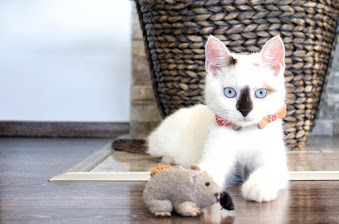Like all behavior issues, your pet’s history will help in identifying options for treatment. Where your pet urine marks, how many locations, how often, and how long she marks are all important factors. The number of pet cats both outside and inside the home must also be identified. Environmental changes, human/animal social patterns, and new additions to the home (such as renovations, furniture, pets, people) must also be investigated.
If your pet cat is not yet neutered and you do not want it to breed, you may want to have your pet castrated. To rule out medical issues, a urine test has to be done. Also, determine where your cat sprays urine. Do you see small spots of urine in various multiple locations, or do you see urine 6 - 8 inches up on walls?
The treatment should be focused on minimizing the animal’s spraying motivation. There is some evidence that evaluating and enhancing litter box usage might minimize spraying. The ideal number of cat litter boxes is how many cats are there in the home plus one. Change the litter weekly and clean it every day. Spray some scent neutralizing products on any spots that get sprayed. Additionally, factors that could make a cat refuse to use the litter box have to be addressed.
If your pet’s spray marking behavior bothers you, it is a good idea to talk to your veterinarian Pasadena, MD about it.



